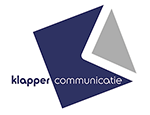The USA ranks second as world’s leading format exporting country followed by the UK and The Netherlands, and also dominates the international fiction market (Esser,2010). Primary American fiction series can be seen in about 125 tv-markets and are dominantly present at the European markets. But in the past years an European tv-industry for fiction was developed especially in the Scandinavian market. According to Mikos (2013) Denmark developed a new production culture by combining Hollywood structures with local ideas and appeal. And with help of the European Union’s MEDIA program an European TV DRAMA Lab was developed which uses a so called writers room for the production of European fiction. Even the amount of co-productions increased due the MEDIA program. So probably a shift in the flow of worldwide fiction series can be expected. But it looks like that the American tv-industry also launches another marketing strategy against the emerging export of European fiction scripts to the US.
In June and July 2014 a new season of action series 24: living another day was aired in the USA at FOX (Dutch channel RTL5 launched the new episodes already in July 2014). The script of the newest episodes shows a delocalization trend: the series uses London and Washington as the playing field instead of only American locations and also English actors (like Stephen Fry) participate in the new series. This mixed-cultures element makes the series more accessible to the European viewer and increases sales potential for the international market.
Delocalization marketing strategy was already used by European tv-industry. Scandinavian crime series as The Bridge (2011, SVT and DR) and Dicte (2013, TV2) use mixed characters and mixed locations (Swedish and Danish). The mixed-culture element is even a storyline in The Bridge.
The mixed-cultures element was also the basis for crime comedy series Lilyhammer (NKR1) in 2012. In the series not only the locations and the cast were mixed (Norway and USA) but also the language. An American ex mob member builds up a new life with a new identity in the countryside of Lillehammer, but still his old mob friends are able to trace him in Norway.
A recent example is Welcome to Sweden, launched at TV4 Sweden in March this year (in July also in the USA at NBC). The series deals with an American accountant with a Swedish girlfriend, who gets a job in Sweden whereby he is forced to build up a new life in Scandinavian culture.Probably the delocalization marketing strategy of the tv-industry will boast international sales of fiction formats in the world.
Charles Vaneker
Agnes Dijker
Sources
Mikos, L (2013) Producing Serial Fiction in Europe – Adoption of American TV structure. retrieved from http://www.iamcr2013dublin.org/content/producing-serial-fiction-europe-adoption-american-tv-structure, at 16-7-2014
Esser, A. (2010) Die Bedeutung von Formaten für Fernsehsender und Produktionsmärkte. Formatiertes Fernsehen. Media Perspektieven. Vol. (2), 2010.
